[Yamagata, Takahata Town] Pray to Kameoka Monju, the God of Academics! | Introducing a Power Spot for Academics and Tourism
2025/10/03 This site contains advertisements. Category: visit to a shrine or temple
![[Yamagata, Takahata Town] Pray to Kameoka Monju, the God of Academics! | Introducing a Power Spot for Academics and Tourism アイキャッチ](https://bongheiberg.yamagata.jp/wp-content/uploads/2025/08/亀岡文珠1.jpg)
Kameoka Monju, located in Takahata Town, Yamagata Prefecture, is the god of learning and is counted among Japan’s three great Manjusri deities.
With a history of 1,200 years, the shrine is bustling with worshippers praying for success during exam season. It’s also a popular tourist spot, boasting a path lined with cedar trees and a spring that’s said to grant wisdom.
This time, we’ll introduce you to the highlights of Kameoka Monju and the surrounding area, perfect for families.
Visit during exam season! Introducing the locations and attractions of Kameoka Monju
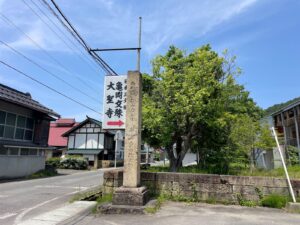
Kameoka Monju is a reassuring ally for those preparing for exams or qualification tests. Here we will introduce the attractions of Kameoka Monju and how to get there.
What kind of shrine is Kameoka Monju?
Kameoka Monju (officially known as Shokosan Daishoji Temple) in Takahata Town, Yamagata Prefecture, is one of Japan’s three great Manjusri temples, and is the god of learning. It is said to have been founded around 1,200 years ago, and is known as a power spot with a long history.
The principal image of the temple, Manjusri Bodhisattva, is famous as the “Buddha of Wisdom,” and people from all over the country come to pray for success in upcoming exams and qualification tests. The approach to the temple, lined with cedar trees, is very quiet, and just walking along it is enough to calm the mind. There is a spring of water called “Wisdom Water” within the temple grounds, and it is said that drinking this water will clear your mind and bestow wisdom.
Another attraction is the beautiful seasonal scenery, with cherry blossoms in spring and autumn leaves in autumn. After worshiping at the shrine, you can enjoy sightseeing in the surrounding area, such as Takahata Winery and hot spring facilities, making it the perfect spot for an outing with family or friends.
How to Access Kameoka Monju
Kameoka Monju is located in Takahata Town in the Okitama region in southern Yamagata Prefecture. It is accessible by public transport, such as taxis, from JR Takahata Station, but it is also conveniently located by car. The parking lot is large and can accommodate large buses, making it a safe place for groups and families.
The temple grounds are also relatively spacious, making it easy for people with strollers or elderly people to stroll around at their leisure. Please note that the area is lined with residential houses, so the entrance can be a little difficult to find. There are several guiding signs along the road, but first-time visitors should be careful as they are easy to miss.
The route takes you onto narrow farm roads, so be sure to follow your navigation system’s directions and make sure you don’t miss the sign. In winter, the roads may be covered in snow, so please be careful of road conditions.
| Spot Name | Kameoka Monju (Matsutakayama Daishoji Temple) |
|---|---|
| telephone number | 0238-52-0444 |
| Business Hours | 8:30 AM – 5:00 PM (8:30 AM – 4:00 PM from November to April) |
| Closed days | – |
| Address | 4028-1 Kameoka, Takahata-machi, Higashiokitama-gun, Yamagata Prefecture, 992-0321 |
| Access | Approximately 10 minutes by car from Takahata Station on the Yamagata Shinkansen. Approximately 15 minutes by car from Nanyo-Takahata Interchange on the Tohoku Chuo Expressway. |
| Parking | Available (free: approximately 100 spaces) |
| Admission fee | Free |
| Official website・SNS | Kameoka Monju Homepage Kameoka Monju Instagram |
The Origin and Benefits of Kameoka Monju, the God of Wisdom
Kameoka Monju is a nationally renowned temple, counted among the “Three Great Monjus of Japan,” along with Abe Monjuin Temple in Sakurai City, Nara Prefecture, and Chionji Temple (Kirido Monju) in Miyazu City, Kyoto Prefecture.
Manjusri Bodhisattva is the Buddha of wisdom, and has long been considered a symbol of wisdom, as evidenced by the proverb “Three heads are better than one.” The Manjusri enshrined at Kameoka Manjusri is also worshipped as the god of learning, and many people visit to pray for success in entrance exams and qualification tests.
The Origins and History of Kameoka Manjusri
Kameoka Monju Temple was founded in 807, the second year of the Daido era during the early Heian period. It’s said that when Tokuichi Shonin, a high priest from Nara’s Todaiji Temple, visited the Tohoku region on a missionary mission, he was moved by the mountain’s shape, which resembled Mount Wutai in China, and had a temple built there. This is the origin of the Monju Hall.
The current main hall (Monju Hall) is an imposing structure rebuilt in 1914 to a design by Yonezawa-born architect Chuta Ito. The temple grounds cover an area of approximately 67,000 square meters, making it one of the Tohoku region’s most renowned temples (ancient temples) with a history of over 1,000 years. During the Edo period, it was a place of imperial prayer, and there are records of it being granted red seal land by ten shoguns, from Tokugawa Tsunayoshi to Tokugawa Iemochi, making it a truly nationally renowned temple.
Not Just Academic Benefits! Introducing Other Benefits
While Kameoka Monju is visited by many students and their families praying for academic success, the benefits it offers go beyond academics.
It has long been said that “if you visit the shrine three years in a row, you are guaranteed to receive good wisdom,” and it is said to offer benefits for a wide range of prayers, including healthy child growth, family safety, business prosperity, and road safety. However, it is its academic benefits that it is most famous for! Especially during exam season, many students from inside and outside the prefecture visit the temple, and the grounds are filled with the excitement of people praying earnestly.
It’s a waste to just visit! Introducing the charming spots of Kameoka Monju
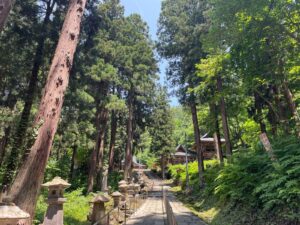
There are many sights within the grounds of Kameoka Monju that are definitely worth stopping by before or after your visit.
You can enjoy the magnificent scenery in a solemn atmosphere that evokes the weight of history, such as the quaint promenade and the stone-paved approach surrounded by old cedars and lined with stone Buddha statues. Here we introduce some of the charming spots at Kameoka Monju.
Stone-paved roads and rows of old cedar trees – the approach where you can enjoy the spectacular view of the Sixteen Arhats
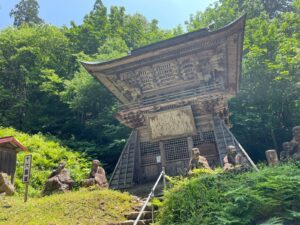
The approach to Monjudo Hall is paved with beautiful cobblestones and lined with giant, ancient cedar trees, some over one meter in diameter. Walking through this majestic tunnel of cedar trees, you’ll feel the weight of 1,200 years of history.
Along the way, 16 stone Buddha statues, known as the Sixteen Arhats, quietly watch over worshippers. Niomon Gate and Kongorikishi statues: At the entrance to the approach is the magnificent Niomon Gate, a mountain gate. On either side of the gate are the glaring Kongorikishi statues in the A- and Un-form, powerfully welcoming those entering the temple grounds.
Give yourself wisdom!? Tone Water, the Water of Wisdom
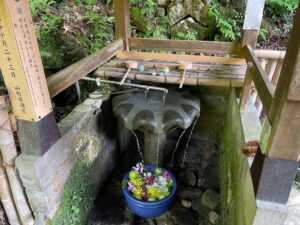
Tone Water, also known as the “Water of Wisdom,” is a pure spring that springs from behind the Monjudo Hall.
It is said that “one sip will grant you the wisdom of Monju,” making it a popular power spot among students and prospective students. The cold, clear spring water has been selected as one of the “100 Famous Village Waters of Yamagata” and is available to drink freely.
Matchmaking Kannon, Oshoten
To the right of the Monjudo Hall stands the Matchmaking Kannon Hall, housing 33 Kannon statues, including Amida Nyorai, the Eleven-Headed Kannon, the Nyoirin Kannon, and the Bato Kannon. Worshipped as the Kannon of Matchmaking, the temple is a popular spot for worshippers praying for love, marriage, and other good fortune.
Also enshrined in the main hall (Buddhist hall) is Kankiten, also known as Oshoten. It is said that worshiping this Buddha will bring marital love and blessings, and he is considered an auspicious Buddha, with legends saying that he will “gather the blessings of seven generations in one generation.”
Don’t miss this place! Unique wisdom goods and a tea shop
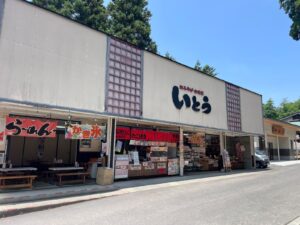
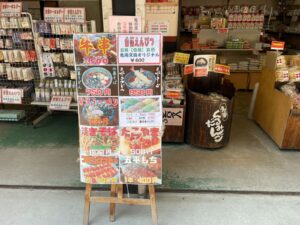
The temple office was selling unique talismans and goods. For example, the “Pencil of Wisdom” is said to be blessed with the protection of Manjusri Bodhisattva.
There were also many other unique wisdom goods on sale, such as “Passing Exam Prayer Rice,” “Passing Exam Sweet Chestnuts,” “Passing Exam Daruma Dolls,” and “Passing Exam Hachimaki” (rice wrapped in rice dumplings). These would make great souvenirs for students taking exams.
There is also a teahouse just visible from the parking lot, adjacent to which is an air-conditioned and heated rest area and well-maintained toilets. At the teahouse, you can enjoy local specialties that can only be found here, such as the famous konnyaku balls and chie no yakidango (grilled dumplings of wisdom). You can also enjoy light meals, and of course, they also sell souvenirs, shaved ice, and many other items that children will enjoy.
4 nearby spots you can’t miss when visiting Kameoka Monju
Kameoka Monju is not just a place to pray; there are also many other attractive spots to stop by in the surrounding area. Here we will introduce some recommended spots that you should definitely check out when you visit Kameoka Monju.
・Hamada Hirosuke Memorial Museum: A memorial museum showcasing the achievements of children’s author Hamada Hirosuke, known for works such as “The Red Demon Who Cried.” It’s perfect for families.
・Mahoroba Furunosato Historical Park: A historical park dotted with restored Jomon dwellings and ancient tombs. It’s also home to the three-story pagoda of Yasukutsu Hachiman Shrine and a museum, making it a great place for parents and children to learn about history.
・Uriwari Rock Garden Park: A dynamic rock garden park making use of the remains of a Takabatake stone quarry. The natural hall-like landscape is sure to make for great photos.
瓜割石庭公園の紹介記事はこちら
・Takahata Winery: One of the largest wineries in the Tohoku region. You can enjoy tastings and purchase souvenirs, making it a great spot for the whole family.
高畠ワイナリーの紹介記事はこちら
Summary
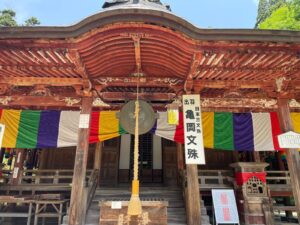
Kameoka Monju in Yamagata Prefecture is an attractive tourist spot that combines the blessings of the god of learning with magnificent natural scenery. Praying for success at this historic temple with 1,200 years of history is sure to give test-takers some encouragement!
Experiences like the cedar-lined approach to the temple and the water of wisdom will also create fond memories for children, and touring the surrounding tourist attractions will make for a fun day out for the whole family. Why not add Kameoka Monju to your Yamagata sightseeing plans and embark on a journey to be blessed with wisdom and power?
*The information in this article is current as of July 2025. Visiting hours and event dates may be subject to change, so please check the official information before visiting.


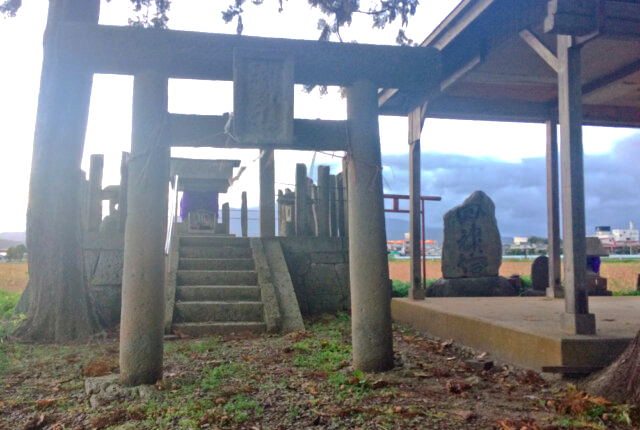
![[Yamagata, Shonai] Kumagaya Shrine, the birthplace of Kamenoo | Learn about the life of Kumagai Saburobei, the god アイキャッチ](https://bongheiberg.yamagata.jp/wp-content/uploads/2025/09/熊谷神社.jpg)
![[Yamagata, Nagai City ] The Head Priest’s Passion for Motorcycles Shines—Sōmiya Shrine, a Sacred Spot for Riders アイキャッチ](https://bongheiberg.yamagata.jp/wp-content/uploads/2025/07/unnamed.png)
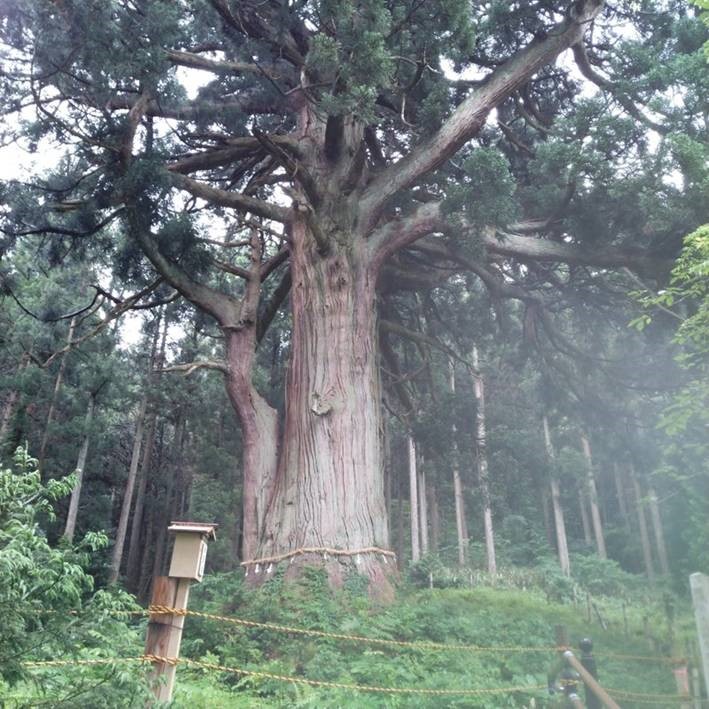
![[Yamagata, Tendo City] Takeisao Shrine, dedicated to Oda Nobunaga | Goshuin and Konpeito Worship Report アイキャッチ](https://bongheiberg.yamagata.jp/wp-content/uploads/2025/07/image6.jpg)
![[Asahi Town, Yamagata] Visiting Air Shrine | A Mysterious Spot Enshrining Air アイキャッチ](https://bongheiberg.yamagata.jp/wp-content/uploads/2025/07/IMG_3602-scaled.jpg)
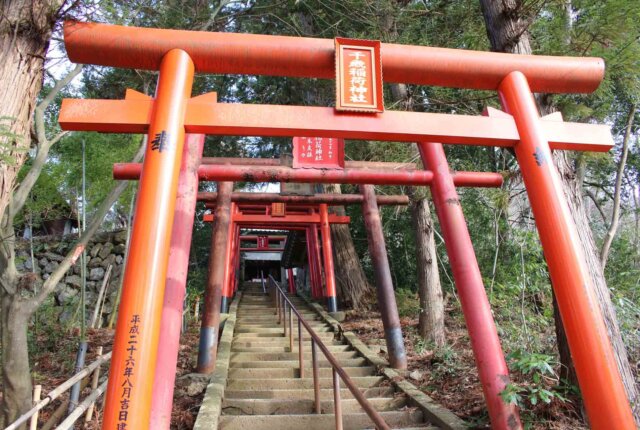
![[Yamagata, Yamagata City] Karamatsu Kannon | The fifth of the 33 Mogami Kannon temples with a spectacular view and a free campsite アイキャッチ](https://bongheiberg.yamagata.jp/wp-content/uploads/2025/02/karamatsu-kannon1.png)

![[Yamagata, Tendo] Enjoy authentic gelato at the sports park! Made by Italian-trained artisans at “COZAB GELATO” アイキャッチ](https://bongheiberg.yamagata.jp/wp-content/uploads/2025/09/top-scaled.jpg)
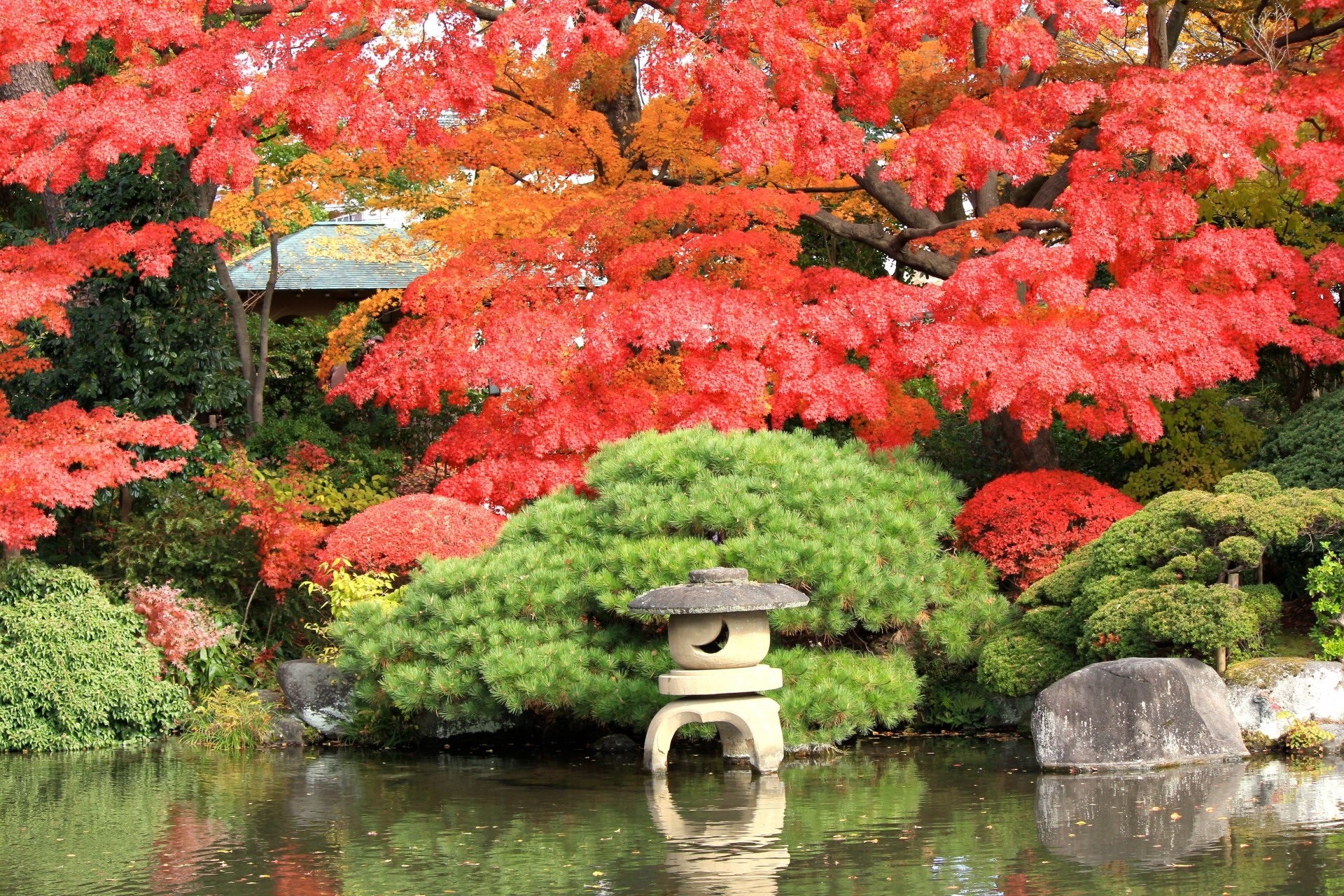
![[Yamagata, Tozawa] “Roadside Station Tozawa Kouraikan” Experience of traveling Korea | Korean gourmet food, and souvenirs アイキャッチ](https://bongheiberg.yamagata.jp/wp-content/uploads/2025/10/道の駅とざわ_高麗館9-1.png)
![[Yamagata, Murayama] Link MURAYAMA’s pizza shop “pizza nu-ma” | Delicious pizza tasting report アイキャッチ](https://bongheiberg.yamagata.jp/wp-content/uploads/2025/09/pizza-nu-ma7.png)